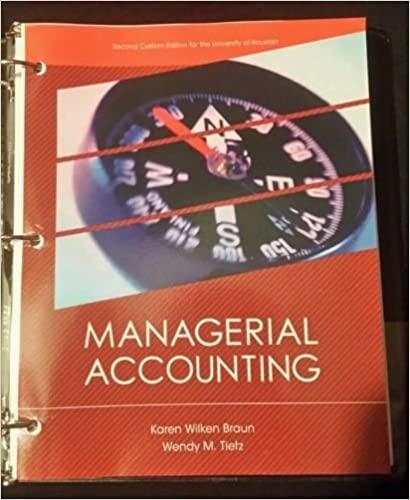8. A variable cost a. decreases in total with increases in volume b. increases on a per-unit basis with increases in volume c. increases in
8. A variable cost
a. decreases in total with increases in volume
b. increases on a per-unit basis with increases in volume
c. increases in total with increases in volume
d. decreases on a per-unit basis with increases in volume
e. None of the above
9. In standard costing, the upper and lower control limits are used to determine
a. the direction of the variance
b. the dollar amount of the variance
c. whether or not to investigate a variance
d. All of the above
e. None of the above
10. The direct materials usage variance is part of the performance evaluation of the
a. production manager
b. sales manager
c. purchasing agent
d. controllers office
e. None of the above
11. Volume variances are generally the responsibility of the
a. purchasing agent
b. production manager
c. sales manager
d. controllers office
e. None of the above
12. When using variable costing,
a. all fixed costs are deducted on the variable costing income statement
b. the total cost of goods sold is deducted on the variable costing income statement
c. the cost allocated to ending inventory consists of both fixed and variable costs
d. the total contribution margin on the variable costing income statement is based on units produced
e. None of the above
13. According to GAAP, if the ending balance in the overhead control account is considered immaterial,
a. it is closed to direct materials, work-in-process, and finished goods
b. it is closed to work-in-process, finished goods, and cost of goods sold
c. it is closed to finished goods and cost of goods sold
d. the total is closed to cost of goods sold
e. None of the above
14. According to the IMAs Statement of Ethical Professional Practice, an accountant must Disclose all relevant information that could reasonably be expected to influence an intended user's understanding of the reports, analyses, or recommendations. This falls under the category of
a. Competence
b. Confidentiality
c. Integrity
d. Credibility
e. None of the above
15. The margin of safety is
a. the amount of revenue earned (or expected to be earned) above the break-even point
b. the amount of revenue earned (or expected to be earned) above total fixed costs
c. the amount of revenue earned (or expected to be earned) above total costs
d. the amount of revenue earned (or expected to be earned) above total variable costs
e. None of the above
Step by Step Solution
There are 3 Steps involved in it
Step: 1

See step-by-step solutions with expert insights and AI powered tools for academic success
Step: 2

Step: 3

Ace Your Homework with AI
Get the answers you need in no time with our AI-driven, step-by-step assistance
Get Started


